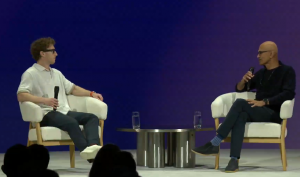The Effect of Wireless on Broadband Adoption
Broadband; we want it, and we all depend on it; but where you live can impact access and adoption of the best that service providers have to offer. The FCC is looking to change both geographic and demographic limitations now plaguing the U.S. in the global race for broadband economic supremacy. Can combinations of a fixed and wireless-mobile strategy improve broadband economic viability by increasing access, adoption, and affordability across the broadband spectrum?
Geographic Limitations
The reality is significant, that where you live depends on the access and quality of broadband service available for most U.S consumers. Its impact is felt most positively in highly dense population areas like the Northeast and large urban centers where private companies have concentrated their efforts to capture lucrative and highly upward socio-economic demographics. This gives the most ROI (Return on Investment) for the large companies to provide the (best of the best) in broadband.
Demographic Limitations
On the other side of this equation are the less dense and less upwardly economic population centers. These are the rural areas where providing the best that broadband has to offer, is and continues to be, economically unviable to service providers. It is a matter of demand and supply, a consequence of our free economic system which relies on private capital to create goods and services which benefit us all. Without the infusion of capital directed to low income and less dense areas there will continue to be a wide gap of access and adoption of broadband in the U.S.
Access and Adoption
The National Broadband Plan-The FCC has formulated a plan to incorporate an initiative to close the gap of the so called underserved with respect to broadband. It has addressed these issues by targeting areas of needed improvement in the telecommunications arena for the U.S.
Universal Service Fund-A plan to redirect funds to broadband access, originally adopted to subsidize Telco providers to serve under populated areas with telephone service where the economics in providing this service was unfeasible.
Spectrum Reallocation-A plan to reallocate spectrum from broadcasters and government entities which were not being utilized to wireless-mobile broadband initiatives.
Broadband Stimulus Plan-Provide funding, approximately $7Billion, to encourage service providers to build broadband infrastructure into underserved areas. Funding was allocated through an extensive grant process to prove viability of the applicant.
Net Neutrality– A controversial plan to provide equal and unencumbered access to broadband for all involved constituents
A Fixed and Wireless-Mobile Solution
In reality economic realities of wide-spread adoption of broadband continues to be sporadic due to the large investments service providers must make to realize a reasonable return on investment. Since competition brings prices down for consumers, operators are only willing to compete where the most attractive demographics and dense population centers exist.
With the advent of continued proliferation from wireless coverage throughout the U.S., and the projected exponential growth in mobile access, adoption and affordability through LTE to 4G technology; the realities of serving less populated areas becomes increasingly more likely. The strides being made in technology within the mobile arena can significantly impact the broadband community.
Cisco White Paper: (See LTE: Simplifying the Migration to 4G Networks)
Mobile is highly competitive and requires less infrastructure thereby reducing capital outlays by service providers. This is the most promising solution along with fixed broadband to penetrate underserved areas in the near future.
Mobile operators will continue upgrading back-haul infrastructure to enhance coverage and reliability within the network
4G technology will increase network efficiencies, economics, coverage, and enhancements to give users a top quality experience at a reasonable price
A wireless revolution for both consumer and business dynamics with applications to improve energy consumption, travel efficiencies, educational opportunities, health diagnosis and monitoring, environmental solutions, and business processes will be a true reality in the near future.
The outlook of a fixed and wireless-mobile strategy to bring about widespread access and adoption of broadband to the masses, while significantly achieving a global and competitive reality for the U.S., cannot be over-stated.
[Editor’s Note: Infographic courtesy of Flowtown. –mrh]
A message from John Furrier, co-founder of SiliconANGLE:
Your vote of support is important to us and it helps us keep the content FREE.
One click below supports our mission to provide free, deep, and relevant content.
Join our community on YouTube
Join the community that includes more than 15,000 #CubeAlumni experts, including Amazon.com CEO Andy Jassy, Dell Technologies founder and CEO Michael Dell, Intel CEO Pat Gelsinger, and many more luminaries and experts.
THANK YOU













